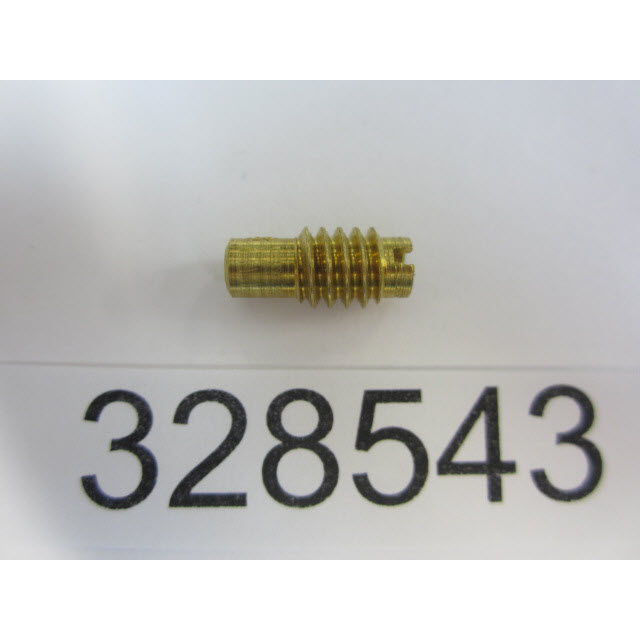Home › Forum › Ask A Member › Carburetor jets
- This topic has 6 replies, 4 voices, and was last updated 4 years, 6 months ago by
outbdnut2.
-
AuthorPosts
-
October 13, 2019 at 5:47 pm #185223
Can the jets in the carburetors for a 1992 evinrude 90 HP outboard be changed to a larger size?
-
This topic was modified 4 years, 6 months ago by
William Hewett.
October 13, 2019 at 5:50 pm #185225October 13, 2019 at 6:06 pm #185230Can the jets in the carburetors for a 1992 evinrude 90 HP outboard be changed to a larger size?
October 13, 2019 at 10:56 pm #185260I believe you are talking about Part Number 328543 – ID Number 58D – Orifice Size 0.058 inches – 1/4-20 thread size, and there are two of them. I see no reason why you can’t drill them out larger, but my experience doing this with a couple of snowblower engines I modified taught me that one numbered drill size can make a very significant difference, and it’s easy to get too rich. I’m curious as to why you want to do this, if you don’t mind my asking . Are you converting it to run on E-85?..or converting it for a racing application?
DaveThe two jets are parts #15 in this view: http://www.marineengine.com/parts/johnson-evinrude-parts.php?year=1998&hp=90&model=J90ELECM&manufacturer=Johnson§ion=Carburetor+%26amp%3B+Intake+Manifold
And this is the part: http://www.marineengine.com/newparts/part_details.php?pnum=OMC0328543
http://www.marineengine.com/parts/images/hg/omc/0328543.jpg

-
This reply was modified 4 years, 6 months ago by
outbdnut2.
October 13, 2019 at 11:42 pm #185266If you are thinking more gas will make it go faster, that is false thinking.
October 14, 2019 at 2:15 pm #185314OK, well first question is: why are you asking about larger jets
My advice is to never “drill out any jets to a larger size”. This will only cause confusion for future repairs…In other words, some tech down the road might be trying to diagnose a rich condition at high speed…So, naturally, he will inspect the high speed jets to make sure they are correct…The tech will look at the jets, they are stamped 58D, which is the correct size, so he will move on looking for some other issue. But, in fact, the jets are not .058″, because you have drilled them out.
The next thing to realize is that the “C” and “D” stamped into these high speed jets is very important. This indicates the direction of fuel flow through the jet. So, a 58C high speed jet is not the same thing as a 58D high speed jet, even though the openings both measure .058″.
That being said, you will find a complete listing of all the jets and their part numbers in any late model OMC service manual.And finally, like Frank says, please don’t put in larger high speed jets expecting the engine to run faster….
-
This reply was modified 4 years, 6 months ago by
fleetwin.
October 15, 2019 at 11:17 am #185348I agree – increasing jet size usually doesn’t get you anything, except maybe a performance degradation by running too rich. The snowblower engines where I increased the jet size, I did because they were running too lean, making for very hot combustion that was turning the muffler red. The timing could not be changed, or I would have backed that off. I tried one and two numbered drill sizes bigger. One size reduced the red hot muffler temp to barely noticeable. Two drill sizes and it didn’t run good, so I bought a new jet and went back to one drill size bigger. My local small engine shop said they had a lot of problems with some makes/models with fixed jets and federal law prohibited them from retro-fitting older adjustable carbs on.
I read awhile back an article in the Pontiac collectors club magazine where a person was setting up his car for racing, and didn’t want to buy the expensive high octane racing fuel, but got nearly the same performance by switching to E-85 and increasing jet size by trial and error. Note that today’s cars that can burn E-85 do so by sensors increasing the amount of fuel injected when E-85 is run. I don’t recommend E-85 modification for outboards because the ethanol can cause other problems, and, I don’t believe 85% ethanol will mix well with the 2-stroke oil.
The only other jet size changes I’ve heard of is for running cars at high altitudes – like in Denver, but I believe the jet sizes become smaller for that – please correct me if I’m wrong.
I’m still curious why Mr Hewitt asked about doing this – we may learn something!
Dave -
This topic was modified 4 years, 6 months ago by
-
AuthorPosts
- You must be logged in to reply to this topic.

